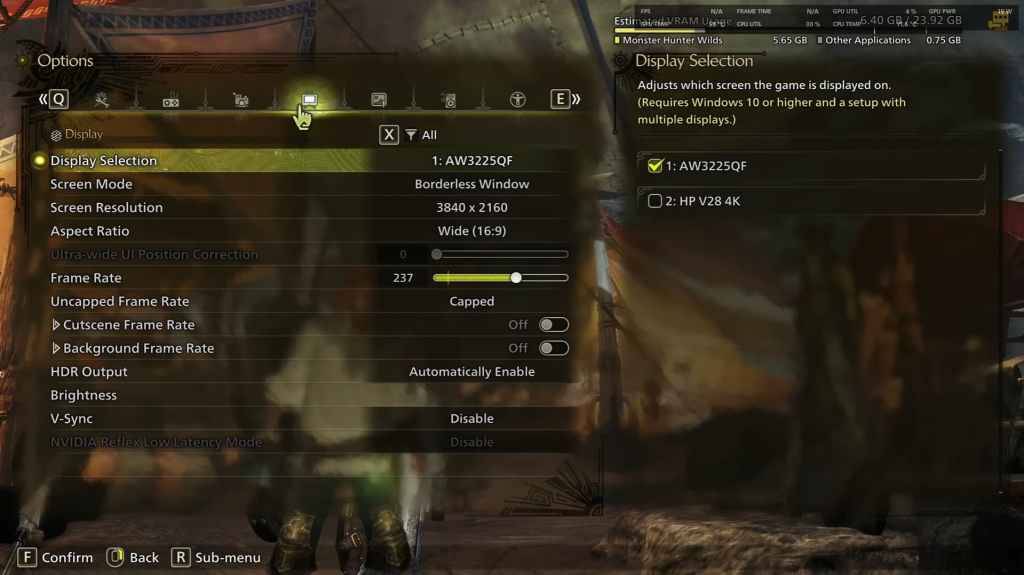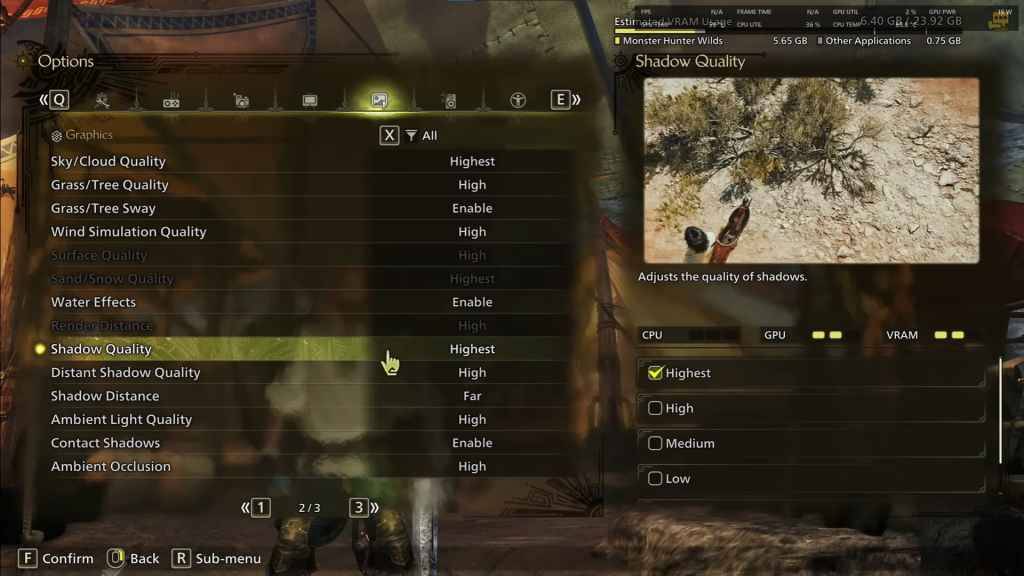by Audrey May 07,2025
*Monster Hunter Wilds* is a visually stunning game, but achieving the best performance while maintaining exceptional graphics can be challenging. Here are the optimal graphics settings for *Monster Hunter Wilds* to help you strike the perfect balance.
If you're aiming for higher resolutions or max settings, you'll need a high-end GPU with more VRAM and a powerful CPU. Before diving into the settings, ensure your system meets or exceeds these specifications:
| Minimum Requirements | Recommended Requirements |
| OS: Windows 10 or newer CPU: Intel Core i5-10600 / AMD Ryzen 5 3600 Memory: 16GB RAM GPU: NVIDIA GTX 1660 Super / AMD Radeon RX 5600 XT (6GB VRAM) DirectX: Version 12 Storage: 140GB SSD required Performance Expectation: 30 FPS @ 1080p (upscaled from 720p) | OS: Windows 10 or newer CPU: Intel Core i5-11600K / AMD Ryzen 5 3600X Memory: 16GB RAM GPU: NVIDIA RTX 2070 Super / AMD RX 6700XT (8-12GB VRAM) DirectX: Version 12 Storage: 140GB SSD required Performance Expectation: 60 FPS @ 1080p (Frame Generation enabled) |
Whether you're equipped with a top-tier RTX 4090 or a budget-friendly RX 5700XT, optimizing the graphics settings in *Monster Hunter Wilds* is crucial. You can achieve significant performance improvements without greatly compromising visual quality. In today's games, the difference between Ultra and High settings is often minimal visually, but the performance gains can be substantial.


| Setting | Recommended | Description |
| Sky/Cloud Quality | Highest | Enhances atmospheric detail |
| Grass/Tree Quality | High | Affects vegetation detail |
| Grass/Tree Sway | Enabled | Adds realism but minor performance hit |
| Wind Simulation Quality | High | Improves environmental effects |
| Surface Quality | High | Details on the ground and objects |
| Sand/Snow Quality | Highest | For detailed terrain textures |
| Water Effects | Enabled | Adds reflections and realism |
| Render Distance | High | Determines how far objects are rendered |
| Shadow Quality | Highest | Improves lighting but is demanding |
| Distant Shadow Quality | High | Enhances shadow detail at distance |
| Shadow Distance | Far | Controls how far shadows extend |
| Ambient Light Quality | High | Enhances shadow detail at a distance |
| Contact Shadows | Enabled | Enhances small object shadowing |
| Ambient Occlusion | High | Improves depth in shadows |
These settings prioritize visual fidelity over raw FPS, which is suitable for *Monster Hunter Wilds* as it is not a competitive game. However, every PC build is unique, so feel free to adjust these settings if you're still experiencing poor frame rates.
To improve performance, consider lowering Shadows and Ambient Occlusion first, as they are the most resource-intensive. Reducing distant shadows and shadow distance can also significantly boost FPS. Additionally, lowering Water Effects and Sand/Snow Quality can help manage VRAM usage.
Not everyone has a high-end system capable of running games at 4K. Here are the best settings for different tiers of builds to ensure smooth gameplay:
Note: Settings not mentioned below should be left at default.
*Monster Hunter Wilds* offers numerous graphical options, but not all impact gameplay equally. If you're struggling with performance, reducing shadows, ambient occlusion, and render distance can help. Budget users should leverage FSR 3 upscaling to boost FPS, while high-end builds can comfortably handle 4K settings with frame generation.
For the best balance, use a mix of medium to high settings, enable upscaling, and adjust shadows and distance settings according to your hardware capabilities.
And there you have it—the best graphics settings for *Monster Hunter Wilds*.
*Monster Hunter Wilds is now available on PlayStation, Xbox, and PC.*
Girls Frontline 2: Exilium Global Website Goes Live, Along With Its Socials!
Marvel Rivals: Understanding Bussing and Catching It
New Game Plus in Assassin's Creed Shadows: Confirmed?
Top Skills to Prioritize for Yasuke in Assassin’s Creed Shadows
Assassin’s Creed Shadows Movements Reviewed by Two Parkour Athletes
Death Stranding 2 Release Date Unveiled in Massive Trailer
Top 25 Action Films Ever Ranked
Top Free Fire Characters 2025: Ultimate Guide